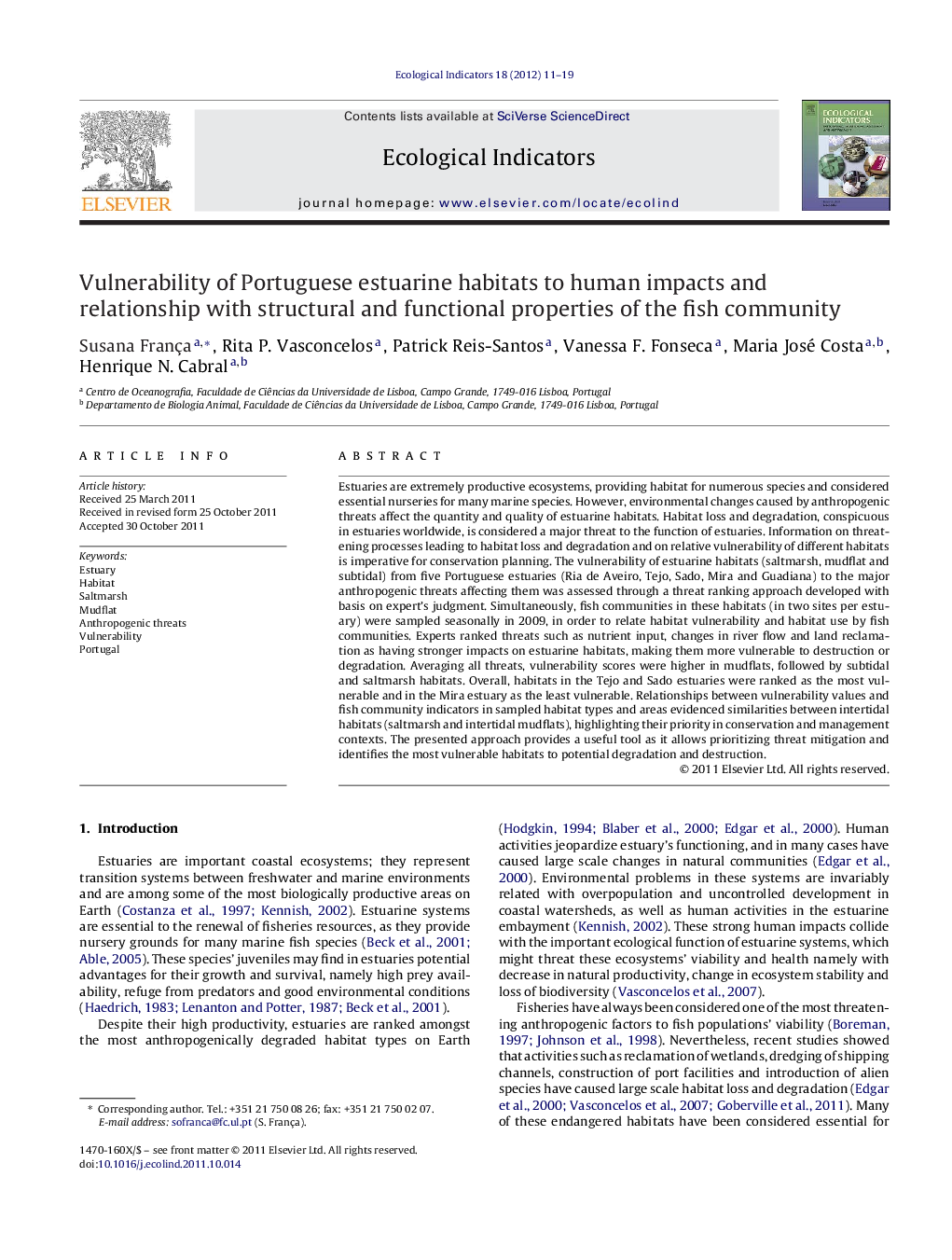| Article ID | Journal | Published Year | Pages | File Type |
|---|---|---|---|---|
| 4373754 | Ecological Indicators | 2012 | 9 Pages |
Estuaries are extremely productive ecosystems, providing habitat for numerous species and considered essential nurseries for many marine species. However, environmental changes caused by anthropogenic threats affect the quantity and quality of estuarine habitats. Habitat loss and degradation, conspicuous in estuaries worldwide, is considered a major threat to the function of estuaries. Information on threatening processes leading to habitat loss and degradation and on relative vulnerability of different habitats is imperative for conservation planning. The vulnerability of estuarine habitats (saltmarsh, mudflat and subtidal) from five Portuguese estuaries (Ria de Aveiro, Tejo, Sado, Mira and Guadiana) to the major anthropogenic threats affecting them was assessed through a threat ranking approach developed with basis on expert's judgment. Simultaneously, fish communities in these habitats (in two sites per estuary) were sampled seasonally in 2009, in order to relate habitat vulnerability and habitat use by fish communities. Experts ranked threats such as nutrient input, changes in river flow and land reclamation as having stronger impacts on estuarine habitats, making them more vulnerable to destruction or degradation. Averaging all threats, vulnerability scores were higher in mudflats, followed by subtidal and saltmarsh habitats. Overall, habitats in the Tejo and Sado estuaries were ranked as the most vulnerable and in the Mira estuary as the least vulnerable. Relationships between vulnerability values and fish community indicators in sampled habitat types and areas evidenced similarities between intertidal habitats (saltmarsh and intertidal mudflats), highlighting their priority in conservation and management contexts. The presented approach provides a useful tool as it allows prioritizing threat mitigation and identifies the most vulnerable habitats to potential degradation and destruction.
